



































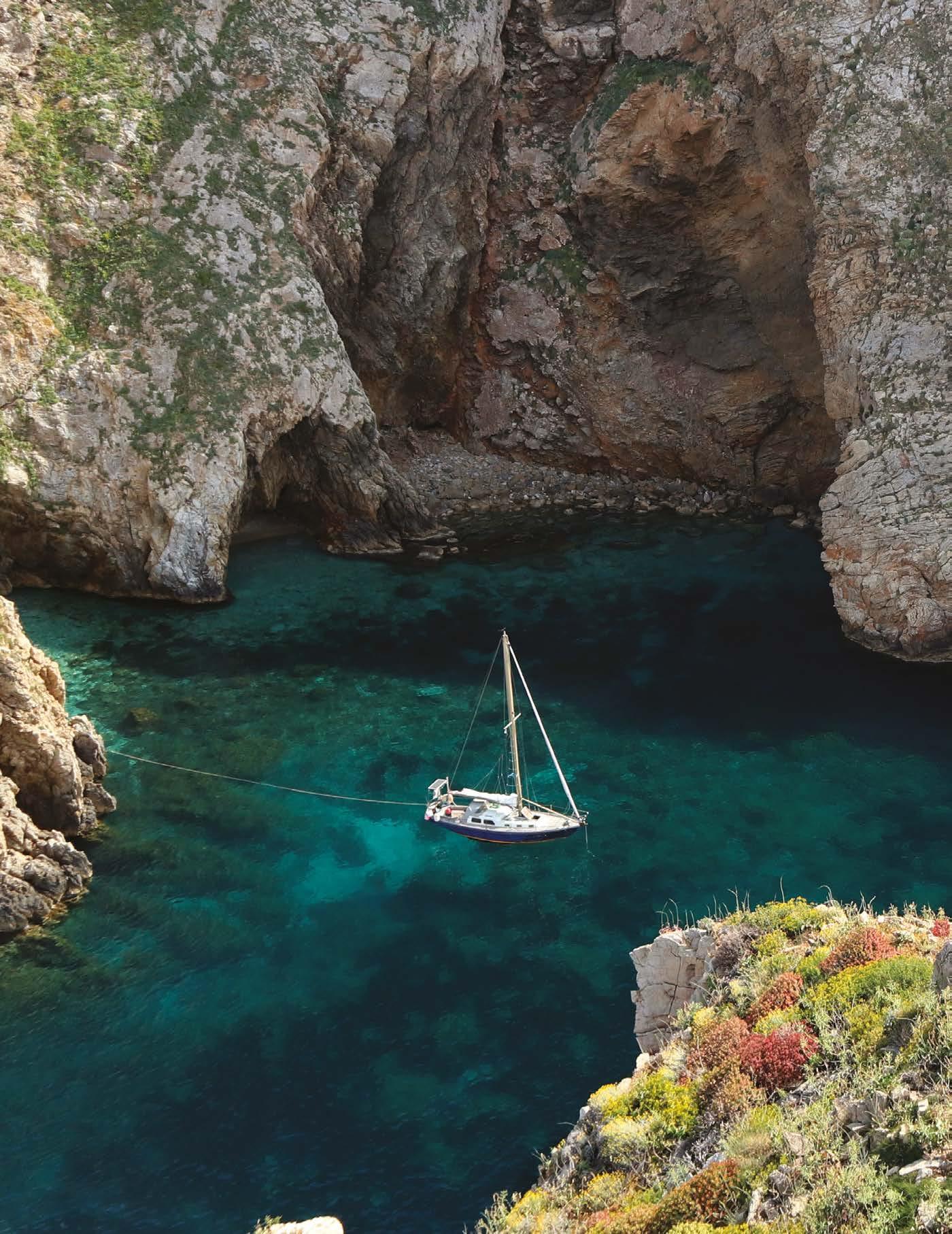






































Genevieve Leaper recounts a leisurely trip through the Aegean – bene tting from some in depth local knowledge

Idon’t know how you feel about having a yacht delivered across an ocean by ship. I always considered it a bit of a cop-out until a decade or so ago when an unexpected hand of cards led me to a di erent point of view. In fact, shipping can sometimes make sense, even for those of us not embarrassed by our wealth. e ARC Atlantic rally is a case in point. Back in the day, we used to refer to a trip to the Caribbean from Europe at the right
time of year as ‘ e Milk Run’. In the Brave New World of GPS and boats that don’t leak, it’s easier still. e hardest part is getting to the Canaries, but given a reasonable break in the Portuguese Trades, even that shouldn’t be too severe. Not to put too ne a point on it, a barrel of rum tossed into the sea in Tenerife would get to Antigua in the end so long as the bung stays in. It’s the trip back that can get interesting, and many people who are happy enough
to join the downwind dash to the islands have neither the time nor the fancy for it.
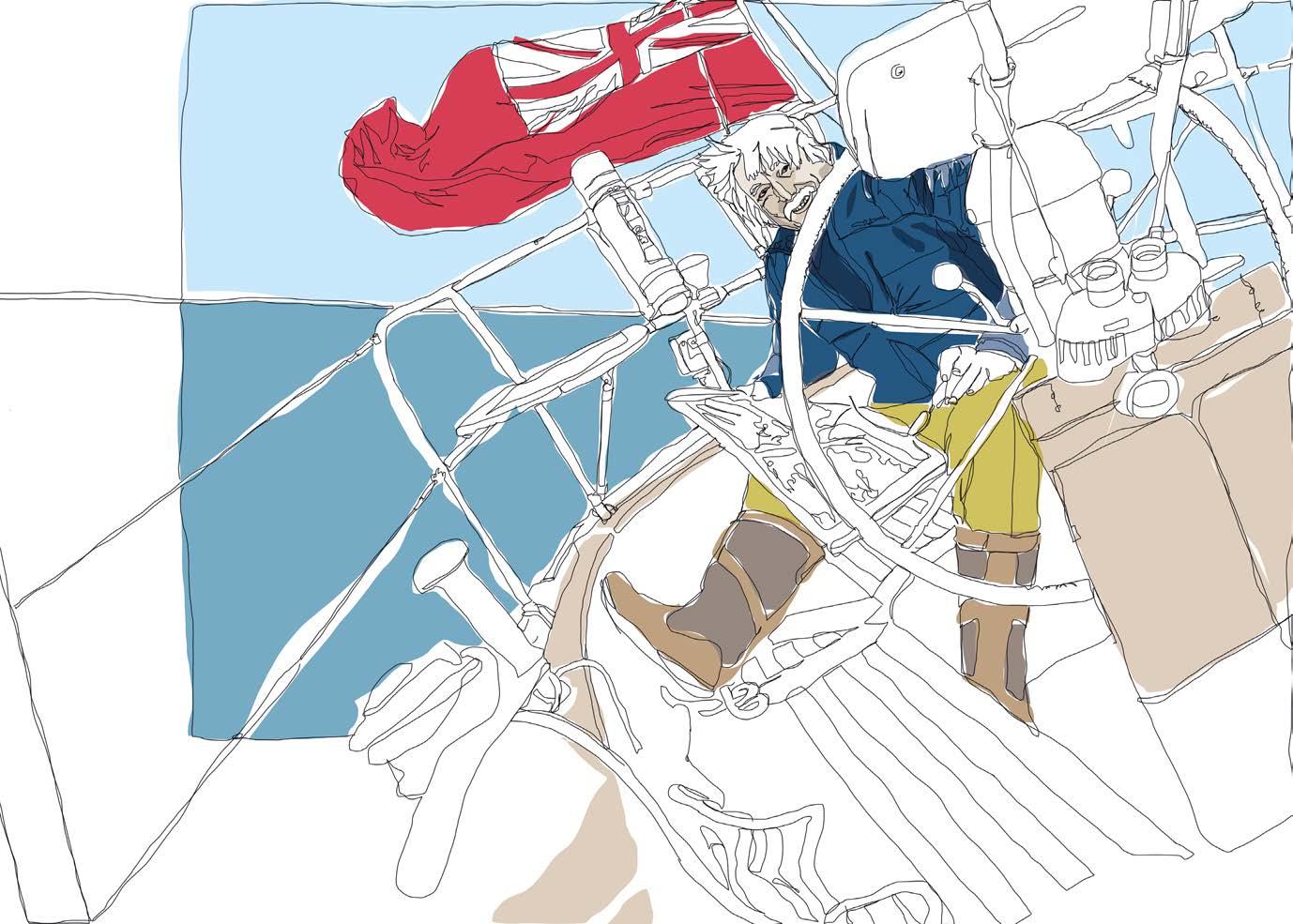
Catch
Putting a 45-footer, mast-up, onto a dedicated cargo ship to avoid a passage around the top of the North Atlantic high, then bash up to the Channel in whatever weather comes a er a few drinks in the Azores, sounds expensive on the face of things. Factor in lost work time, air fares, crew expenses, wear and tear and the rest, and suddenly it doesn’t seem so bad.
Another group facing a similar choice not so long since were circumnavigators cruising in the Indian Ocean islands while on passage for northern Europe. From here, a preferred route home is via a spot of lotus-eating in the Med, an attractive option once you’ve muscled out the Red Sea and the Suez Canal. at changed dramatically when bunches of desperadoes lurking around the Horn of Africa cottoned on to the commercial opportunities o ered by unarmed yachts. A favourite method of dealing with piracy among some of the cruising community is to keep the yacht tooled up with heavy armament and plenty of ammo. A second option, which holds a greater appeal for many, is simply to go somewhere else. For peace-loving sailors bound home from Australia and the Far East, the only alternative that guaranteed non-violence was the Cape of Good Hope. is wasn’t everyone’s idea of fun so, once again, the shipping option became attractive.
anks to Operation Atalanta, a combined e ort of Somalia and the naval forces of EU Member States, piracy between the Horn of Africa and the Gulf of Aden has fallen o , but the point is made. Shipping a yacht can sometimes be an attractive choice for reasons beyond being too bone idle to sail her. Here’s what happened to me.
Twelve years ago, Roz and I were scouring the internet for a yacht to replace the series of classic ga cutters we’d sailed since the beginning of time. We fancied a bermudan yawl with a centreboard, around 40 on deck, glass bre, with a long keel and classic lines. As briefs go it was perhaps over-speci c, but Europe’s a big place and with Britain in the EU there were no political issues, so you’d think we’d have been able to nd what we wanted. But no. A er a year of fruitless frustration, we gave up and went to America, the home of the centreboard yawl. We knew there’d be grief over the VAT and dealing with the bean counters of the
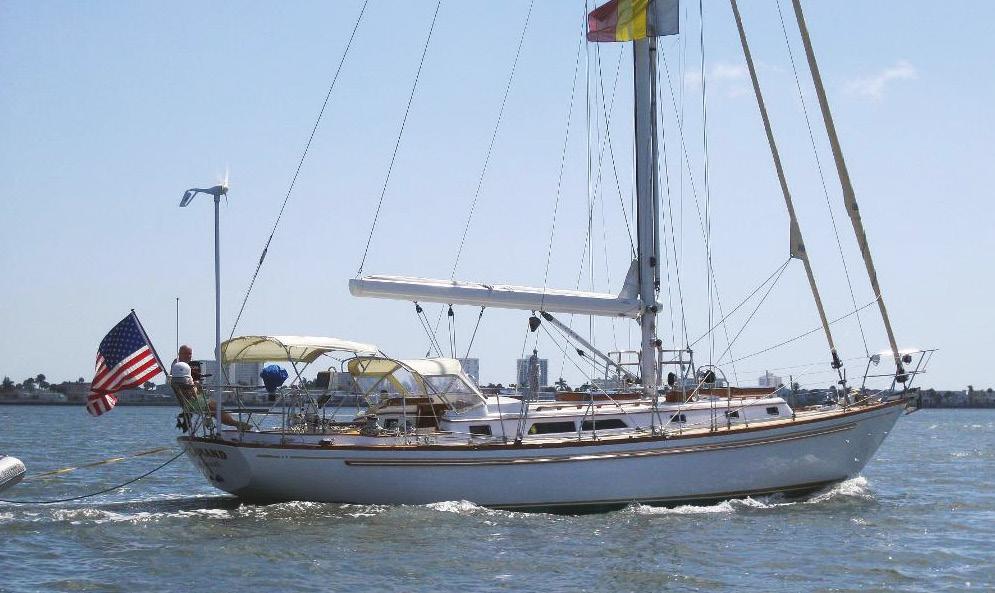
EU’s Recreational Cra Directive, but we’d had enough of disappointment, so o we went to Miami. If you’ve followed this column for a while, you’ll recall the adventures we had by courtesy of a highly creative, larger-than-life broker called Pepper Rodda. You’ll also be aware that instead of a shapely yawl from the board of Rhodes, we fell for a 45 cutter with seven feet of draught, designed by Al Mason. Mason had class. He’d been S&S’s chief dra sman for 20 years before branching out on his own, so he knew how to draw a sheer and pen a seaworthy boat. She needed work, including a new deck, so we had her surveyed, beat the owners down to a realistic price and bought her on the spot. e next question was how to get her home to England. Roz and I have voyaged back from that side of the ocean before, so the default position was to climb aboard, stock up and set course, but, here’s the thing:
Setting aside that I was busy with writing and other commitments, two obstacles stood squarely in the way of this natural inclination. e rst was the weather. Back in the long-ago era when Florida was run by the Spanish, those civilised colonists declared the place un t for
ABOVE Constance, a 45 Al Mason design that proved an ample substitute for a 40’ centreboard yawl“In fact, shipping can sometimes make sense, even for those of us not embarrassed by our wealth”
With over 250 days of sunshine and some of the best cruising grounds in the world, it’s not di cult to understand why Greece remains a popular sailing holiday destination writes Sue Pelling
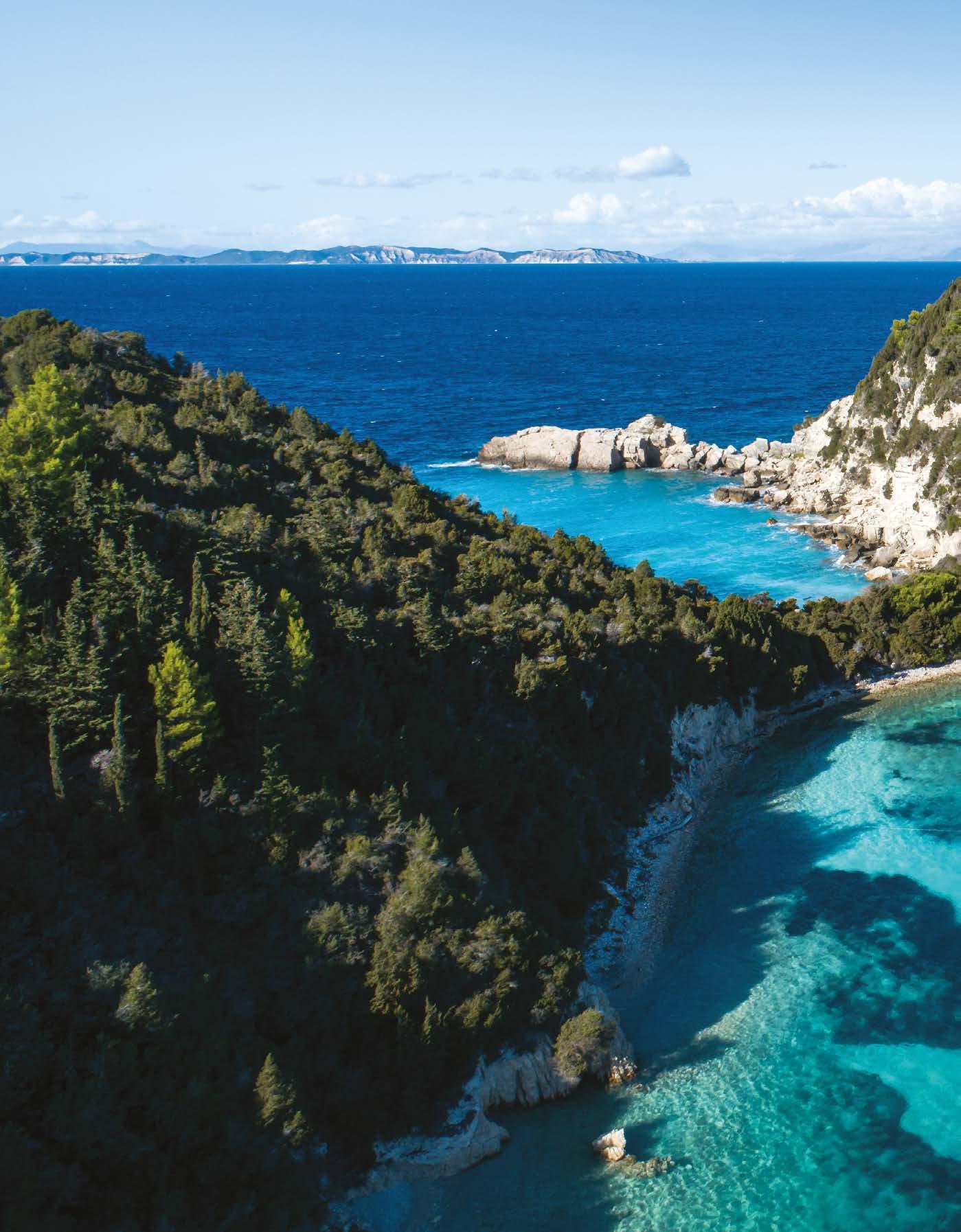
he short haul charter ights and package holiday revolution back in the 1970s led to the introduction of otilla sailing holidays in the Greek islands and, by the 1990s companies like Barrie and Heidi Neilson’s Sailing Holidays was, and still is, one of the key players. ere is no doubt that companies like this, as well as others including Sunsail, Wildwind and Nautilus Yachting are not only responsible for introducing thousands of newcomers to sailing every year, but also keep the fun aspect of sailing alive.

With so many reputable sailing holiday companies now operating in this desirable area of the Mediterranean, choosing a holiday that suits your needs can seem a bit daunting. e rst thing to consider is the wind conditions that vary considerably across Greece, which means some areas will be less suitable for beginners, families, or teams with mixed experience.

Generally speaking, the wind gets stronger as you head eastwards across the Aegean, so newcomers to sailing or those with less experience should ideally consider holidaying to the west, particularly the rst time.

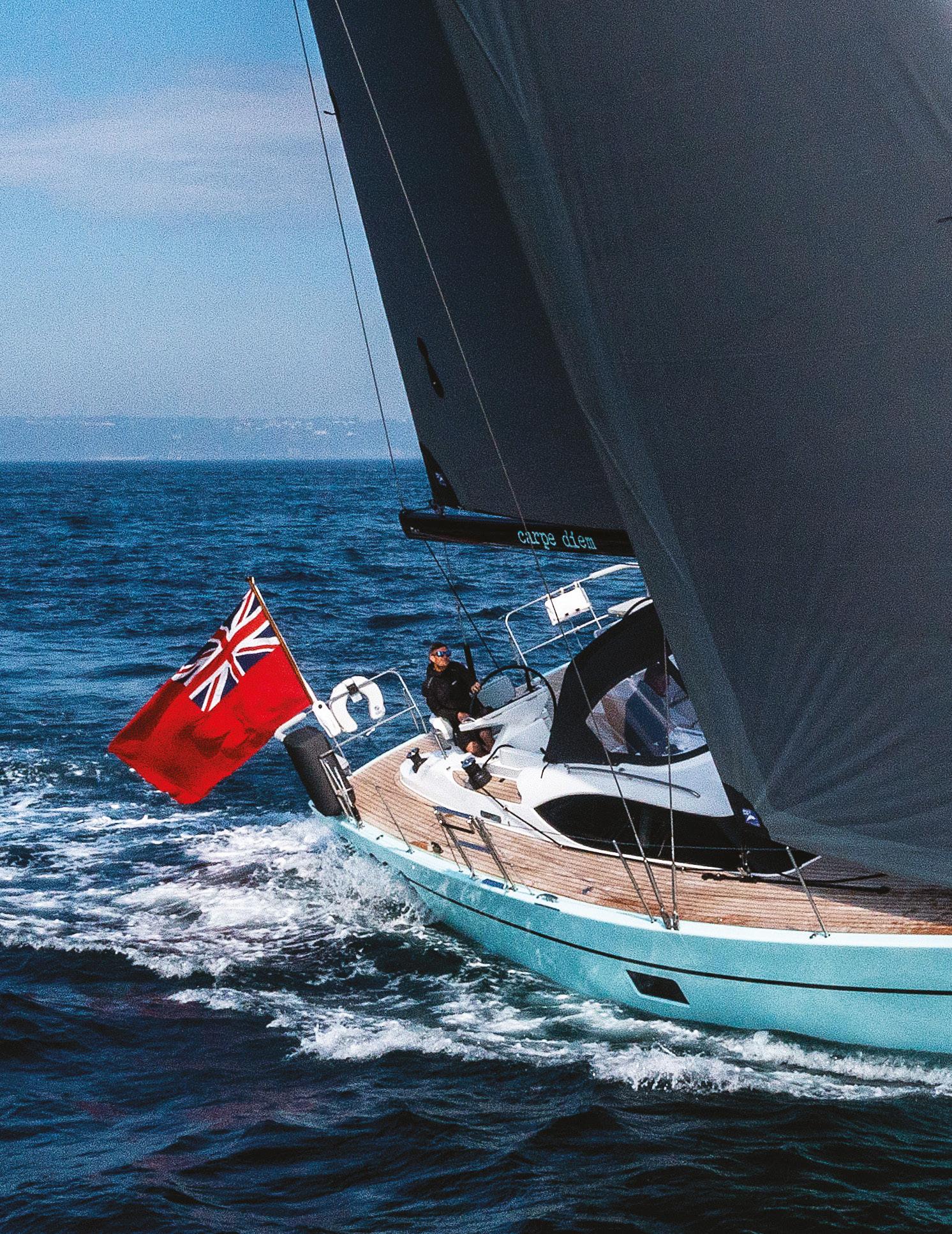
 Oyster Yachts renaissance continues with its all new 495. Sam Je erson takes a delivery trip from Mallorca to Cannes to fully test her capabilities
Oyster Yachts renaissance continues with its all new 495. Sam Je erson takes a delivery trip from Mallorca to Cannes to fully test her capabilities
Kraken Yachts launched this impressive 50 footer last year as its vision of the perfect blue water cruiser. A meticulously thought out design that features a skeg-hung rudder and its unique ‘zero keel ‘ integrated into the hull mould and therefore featuring no keel bolts. krakenyachts.com
e Oyster 495 is a welcome return to the medium sized cruiser fold for a company that seemed to be veering further and further towards the superyacht sized boats. Oyster has always been very capable of putting together a quality boat and it’s clear that its team has used all of its many decades of knowledge to ensure this is a smart, and very capable blue water cruiser with both a turn of speed and
LOA: 16.1m (52ft 8in)
Hull length: 15.15m (49ft 7in)
LWL: 14.27m (46ft 8in)
Beam: 4.77m (15ft 8in)
Draught: standard keel: 2.28m (7ft 5in), shoal keel 1.83m (6ft 0in)


Displacement: 21,000kg (46,300lb)
an ability to look a er you on a passage – whatever the weather. e other key feature is that this boat retains the distinctive style of its larger sisters – not easy to achieve as you scale things down. Despite being a bit smaller, it retains the cachet that has given Oyster such a loyal, almost cultish, following.
LOOKS: HHHHH
BLUE WATER ABILITY: HHHHH PERFORMANCE: HHH HH
Price ex VAT: £975,000
Builder: oysteryachts.com

e latest launch from Dutch boatbuilder Contest and in many ways the closest to the 495 in terms of layout and general ethos. is Judel/Vrolijk design also places strong emphasis on luxury married to fast passage making. e deck saloon and cockpit layout are also quite similar on a cursory rst viewing. contestyachts.com

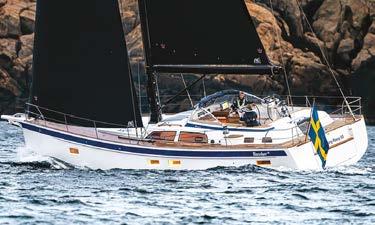
A few years back, Hallberg Rassy would have not been seen as sitting in the same cadre as Oyster but a sea change in design has seen a switch by the Swedish manufacturer to beamier, more performance driven blue water cruisers. e 50 epitomises this and o ers comparable performance to the Oyster. hallberg-rassy.com
